The Kanheri Caves of Mumbai, India
Rajesh and I choke along the highway in his rickshaw, breathing in the air pollution as we zip past the slums bordering the highway. I probably should have taken a taxi, but driving in a rickshaw is so much more fun with the noise, the air, the essence of Mumbai right in my face. I lean out the open door and try to photograph what I see while clinging onto my camera, my backpack and my life in the precarious frame of his vehicle.
The traffic heading south is at full stop — everyone trying to get to work — while we head north, away from the jam. I expect the drive toward Sanjay Gandhi National Park to be easy and green, with signs that we’re heading toward nature. But nothing in Mumbai is easy or green. The ragged edge of life extends as far as I can see. We make a crowded right turn off the highway to the park entrance.
Through the gates, I finally find the peace and quiet of nature which is interrupted by a driver who wants to charge me 2,500 rupees to drive me 10 minutes farther up the road to the Kanheri Caves. He assumes I don’t know there’s an hourly public bus for far less money, but with the sun rising fast I decide I’d rather go now than wait for it. I negotiate to 1,000 rupees and we’re on our way. Ten minutes up the dirt road we arrive at the ticket booth where I climb the stairs to the caves.
The Kanheri Caves are among the oldest in India, used for Buddhist life and meditation from the first century B.C. to the tenth century A.D. Carved from the basalt of the surrounding hills, the caves are surprisingly angular in design with simple stone benches cut along the interior walls of many of them. Several caves have columns at the entrance and beautifully carved figures posed in various mudras.
The Kanheri site holds 109 caves, each numbered with a stencil outside the entrance. Cave 3 is a prayer hall, with remnants of a stupa in front of it and a smaller cave to the left of it.
Walking up to the entrance of Cave 3, I’m struck by the size of the columns and figures at the doorway. I feel tiny — reminiscent of the feeling I had when I walked into St. Paul’s cathedral in Rome. To the left and right, larger-than-life Buddhist figures watch over the entrance.
For the moment, I have the prayer hall to myself. I feel a sense of awe and a sense of loss at the same time. It’s clear this was once a very significant space and it hums with the subtle energy of a dying life force, but a few bits of trash on the ground and noisy tourists approaching the entrance interrupt the reverence this prayer hall deserves.
I wait in the hall until I’m alone again in silence. I wish I knew more about what happened here, how long it took to carve the prayer hall, how the design originated, who carved the columns, what the purpose was of the notches on the ceiling. It’s a maddening paradox that today we so easily record such endless, useless details — what we ate for lunch, which handbag we bought over the weekend — but here, old and vital details are lost. Historic places like this hold incredible stories we’ll never, ever know.
Outside the prayer hall, I climb the steps up the hill toward the other caves. Mumbai’s skyline pokes above the treetops behind a veil of pollution.
I reach the next caves which are carved on the right and left banks of a natural ravine between two hills. An archaeological team is repairing a walkway next to a series of irrigation chambers leading downhill to larger cisterns. I try to ask questions about what exactly these holes in the ground might have been used for but we share no common language.
One of the men on the team recognizes my curiosity and manages to communicate to me that there’s a painting inside the cave where he’s working. He waves me toward the interior and points to the ceiling.
It’s very dark but I can just make out the lines and shading of the art. I sit on the ground, put my elbows on my knees and point my camera up. I adjust my camera settings. Since I don’t have a tripod, I exhale and hold as still as possible as I try to capture a clear image without using a flash. After a few tries, I get a decent shot and discover that the painting is done in tints of red, probably with madder root. And it’s just pretty amazing to be sitting here looking at someone’s skill and creativity from hundreds — or maybe even thousands — of years ago.
I thank the man as I leave the cave and turn my attention across the ravine. Deep and square, more caves lead to more mysterious chambers inside. I take in as much as I can for the speck of time I’m at Kanheri, in awe that these ancient caves have been sitting here quietly through world empires, dictators and revolutions… old and new.


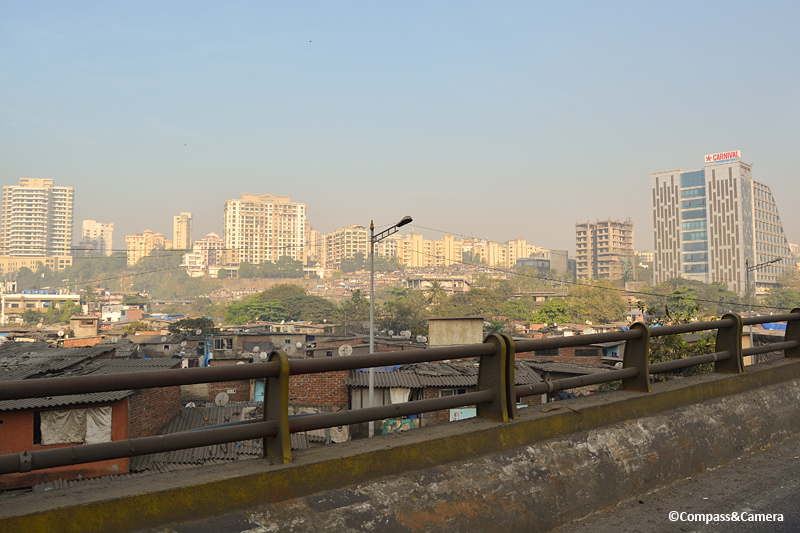






















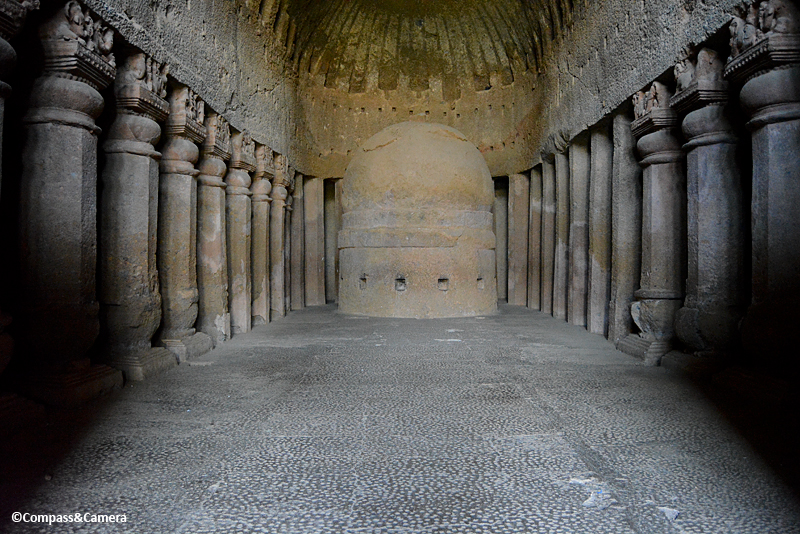


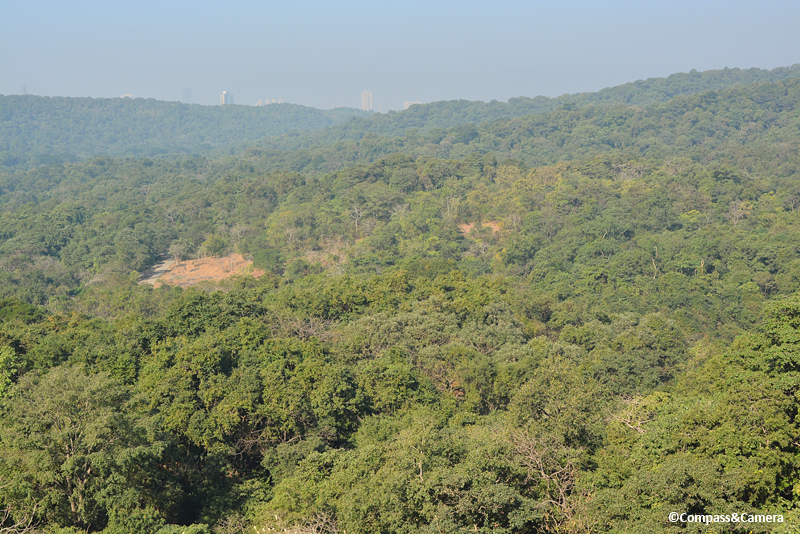
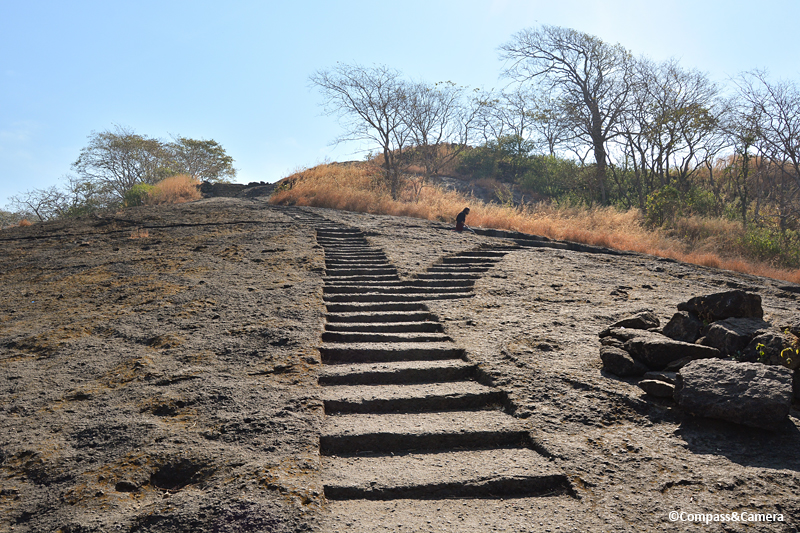



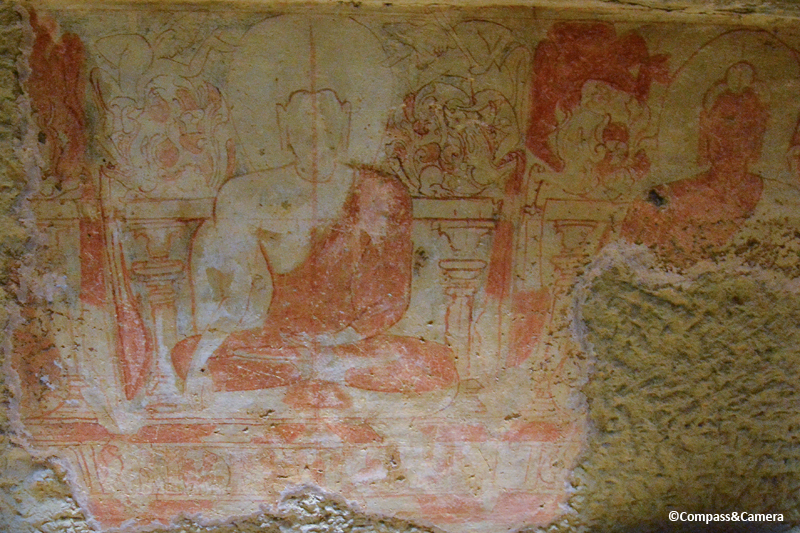




Fascinating photo essay, nicely captured!
LikeLike
Thanks, C.S.! Your images are beautiful. I look forward to following your blog. Thanks for stopping by!
LikeLiked by 1 person
Thanks so much! I look forward to more of your wonderful work as well.
LikeLike
Super views of classy places. Thanks for sharing. I didn’t get my fill of India — so much to see, so little time!
LikeLike
Thanks, Rusha! Yes, I think India requires a lot of time — maybe even a lifetime! 🙂
LikeLiked by 1 person
Wonderful post, K. I had never heard of these caves, so I thank you for this learning experience. That second to last inside photo inside the cave is great, and your technique achieved what you needed!
LikeLike
Thanks, Angel! I think the Kanheri caves are unfortunately overshadowed by the Elephanta Caves, located a short boat ride from the tip of Mumbai. I feel lucky to have seen the lesser known of the two and happy to write about a topic not many people have heard of. Great to hear from you!
LikeLiked by 1 person
It’s interesting to see what seems like a linggam (a symbol of Shiva) in the otherwise Buddhist structure. Or maybe it’s not linggam after all. Thanks for introducing us to this impressive site, Kelly! I had never read or heard about this cave until I saw your post. How nice it is to have an ancient site right at the doorstep of a mega-city like Mumbai.
LikeLike
That’s a really interesting observation, Bama. I suppose it could be a linggam and indicate the influence of Hinduism on Buddhism in the region. I was guessing people might have circumambulated that form like a stupa, but now you’ve got me wondering. Thanks for that insight!
LikeLike
I went to a similar complex about six hours from Mumbai. It is amazing how much time and devotion they put into these complexes. I know in some cases multiple generations worked on the same rock-cut temple.
LikeLike
Hey Jeff! Thanks for your comment — it lends some insight to my question about how long it might have taken to create these caves. Agreed — such devotion and craftsmanship in what remains. The caves must have been spectacular in their heyday.
LikeLike
A great post Kelly. Thoroughly enjoyed it; felt I was there with you 🙂
LikeLike
Ah, the ultimate compliment! Thanks, Andrew! Great to have you along for the journey. Hope you’re enjoying all the snow these days! 🙂
LikeLiked by 1 person
Have you been to Cappadocia – I wondered if these caves are reminiscent of those? (They are the only cave-like dwellings I have ever seen.) Your comment about how much (on such minor topics) we document now, when we have so little information about long-ago life, is a great point. I wish there were a happy medium!
LikeLike
Lex! Great to hear from you! Yes, I’ve been to Cappadocia. In comparison, the Kanheri caves feel much more open, precise and angular, and focused on the entry area. Cappadocia felt way more closed in and organically shaped, with small doors and windows within rounded shapes. An interesting comparison for sure! I need to hop over to your blog now — I’ve been saving your Cuba posts for a quiet time to savor them! 🙂 Thanks for your comment.
LikeLiked by 1 person
Wow i would love to have experienced that place….
LikeLike
“Historic places like this hold incredible stories we’ll never, ever know.” So true, Kelly. But I know a bit more because of your tour. Thanks. –Curt
LikeLike
Places like this remind you that despite everything the Earth keeps turning…which perfectly explains why Indian culture has the classic shoulder shrug when asked about politics, war, or corruption, and the philosophical answer, “What will be will be.”
LikeLike
LOVELY PIX.THANK YOU FOR THE INFO
LikeLiked by 1 person
You’re welcome! Thank you for your comment! 🙂
LikeLike
Your excellent writing and photos provide a wonderful introduction to this fascinating place! Visiting these ancient sites certainly creates more questions than answers and gives so much to ponder…Thanks for a great post.
LikeLike
Thank you, Marilyn! Sorry for the delay in responding to you. Just returned from two snowy weeks in Tahoe — such a contrast from Mumbai! Happy to hear you enjoyed this post! Thanks so much for reading. Hope you had a great weekend. 🙂
LikeLike
Pingback: In lumina
Brilliant post! Enjoyed every step of your exploration.
LikeLiked by 1 person
Thank you so much, Sidran!
LikeLike
The Kanheri caves is historically beautiful.
Great post @compassandcamera
LikeLiked by 1 person
Thanks so much, Akshay!
LikeLiked by 1 person
Pleasureee!
LikeLike
Thank youuuu!
LikeLiked by 1 person
Beautiful post and images as always Kelly. The contrast between this tranquil spot and the chaos of the mega city is striking. I have only transited through Mumbai for weddings and funerals, and to board flights on occasion when Chennai was yet to boast an international airport. Have been meaning to return to it like a tourist. I wish I had been free to join you during your visit.
LikeLiked by 1 person
Oh, I would have LOVED that!! Seeing any part of India with you would be such a treat. My husband and I look forward to returning to India someday, with plenty of time to travel slowly and deeply through Rajasthan definitely, maybe Kerala, who knows where else? Fingers crossed we can arrange to meet you somewhere along the way!
LikeLike
Seems like a good place will visit next time when I go there…
LikeLike
Yes, a very cool place. Check it out!
LikeLiked by 1 person
Incredible photos of an amazing looking place.
LikeLike
Thanks so much!
LikeLiked by 1 person
Interesting post! The figures are so beautifully carved and in pretty good shape. These caves are similar to Buddhist caves we have been to here in Sri Lanka, except that the ones here have many more painted murals in lots of earth tones and even the use of deep blues. You might find it interesting to compare them. Love your photos, especially of the prayer hall and the view from above. A rare landscape of green in Mumbai.
Peta
LikeLike
Such a lovely writeup about the caves! The pictures are beautifully captured too! 🙂
I have been to Kanheri caves a few times, sometimes walking all the way and at other times, cycling up the road. The park is a sight to behold in monsoons when the forest comes alive and deers aren’t half as shy as they are for the rest of the year.
I hope you had a wonderful experience touring the rest of the country 🙂
Cheers and keep blogging!
LikeLike
Thank you, Nomadosaurus! 🙂 Love your blog and all the friends you trek with. Thank you for reading my post about the Kanheri Caves. They were very fun to explore. I hope to return to India someday soon to see more of the country. I had a wonderful time in Mumbai and Goa, and there’s so much more to see! Cheers! 🙂
LikeLiked by 1 person
Thank you so much for your kind words! I hope you visit India soon enough! 🙂
LikeLiked by 1 person